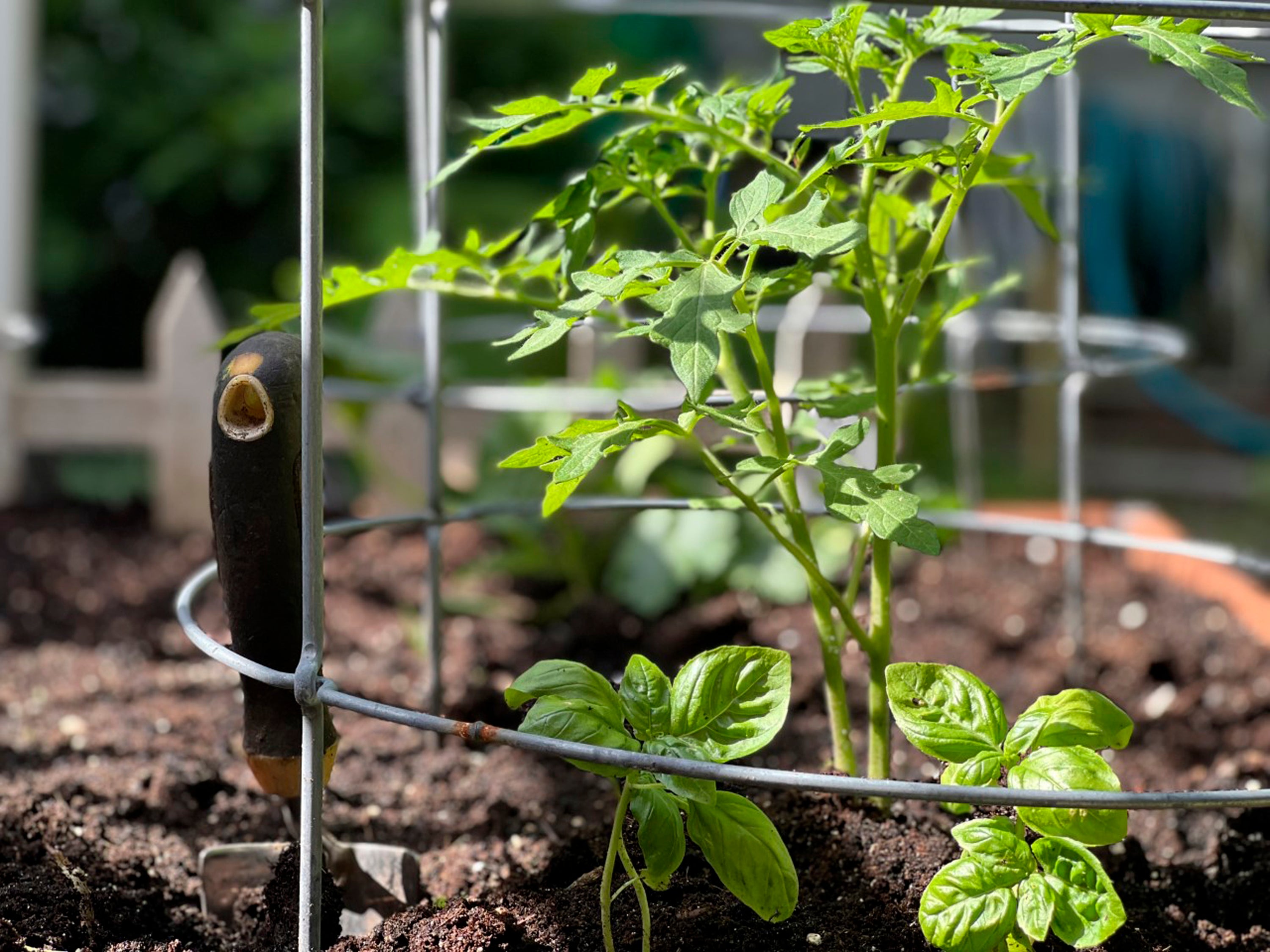The Ultimate Guide To Complementary Planting
The Ultimate Guide to Complementary Planting
Complementary planting, also known as companion planting, is a gardening practice that involves planting certain plants together for their mutual benefit. By carefully selecting which plants to grow near each other, gardeners can create a more balanced and productive garden.
There are many different benefits to complementary planting. Some of the most common include:
- Attracting beneficial insects: Many plants attract beneficial insects, such as ladybugs, lacewings, and spiders. These insects help to control pests in the garden, reducing the need for chemical pesticides.
- Repelling pests: Some plants have natural pest-repelling properties. For example, marigolds can help to repel nematodes, while mint can help to repel mosquitoes.
- Improving soil quality: Some plants can help to improve the soil quality in your garden. For example, legumes, such as peas and beans, fix nitrogen in the soil, which can benefit other plants.
- Decreasing competition for resources: By planting complementary plants together, you can help to ensure that each plant has enough access to sunlight, water, and nutrients. This can help to improve the overall health and productivity of your garden.
If you're interested in trying complementary planting, there are a few things you need to keep in mind. First, you need to do some research to learn about which plants are compatible with each other. There are many resources available online and in libraries that can help you with this.
Once you've chosen your plants, you need to plant them in the right location. Pay attention to the sunlight, water, and nutrient requirements of each plant, and make sure to plant them in a location that will meet their needs.
You should also consider the size of the plants when you're planning your garden layout. Some plants, such as tomatoes and corn, can grow quite large, so you'll need to make sure to give them enough space.
With a little planning, complementary planting can help you to create a beautiful, healthy, and productive garden.
Here are some specific examples of complementary plants:
- Beans and corn: Beans fix nitrogen in the soil, which benefits corn. Corn provides shade for beans, which helps to protect them from pests.
- Marigolds and tomatoes: Marigolds repel nematodes, which can damage tomatoes. Tomatoes provide support for marigolds, which can be top-heavy.
- Cabbage and nasturtiums: Nasturtiums attract pests away from cabbage. Cabbage provides support for nasturtiums, which can be delicate.
- Herbs and vegetables: Many herbs, such as basil, mint, and rosemary, can help to repel pests and attract beneficial insects. They can also add flavor to your vegetables.
When planning your garden, it's a good idea to consult a complementary planting chart. These charts can help you to choose the right plants for your climate and location.
Complementary planting is a simple and effective way to improve your garden. By planting the right plants together, you can attract beneficial insects, repel pests, improve soil quality, and decrease competition for resources. With a little planning, you can create a beautiful, healthy, and productive garden using complementary planting.
Complementary planting, also known as companion planting, is a gardening practice that involves planting different types of plants together for mutual benefit. Some plants attract beneficial insects, while others deter pests. Some plants improve the soil, while others provide shade or windbreaks. By carefully selecting which plants to grow together, you can create a garden that is healthy, productive, and pest-free.
If you're interested in learning more about complementary planting, I recommend visiting Gardenia Inspiration. This website has a wealth of information on the topic, including plant charts, articles, and videos. You can also find a community of gardeners who are passionate about complementary planting and can offer advice and support.
FAQ of complementary planting
Here are the 5 most frequently asked questions about complementary planting, along with valuable insights and solutions:
1. What is complementary planting?
Complementary planting, also known as companion planting, is a gardening technique that involves planting certain plants together to benefit each other. Some plants can attract beneficial insects, deter pests, or improve the soil quality of the area around them. By planting complementary plants together, gardeners can create a more sustainable and productive garden.
2. What are some of the benefits of complementary planting?
There are many benefits to complementary planting, including:
- Increased yields: Complementary plants can help to improve the growth and productivity of other plants. For example, beans can fix nitrogen in the soil, which can benefit other plants that need nitrogen.
- Reduced pest and disease problems: Some plants can attract beneficial insects that prey on pests, while others can produce chemicals that deter pests. For example, marigolds can repel nematodes, which are pests that can damage plants' roots.
- Improved soil quality: Some plants can improve the soil quality of the area around them by fixing nitrogen, decomposing organic matter, or attracting earthworms.
- Increased biodiversity: Complementary planting can help to increase the biodiversity of a garden, which can make it more resilient to pests and diseases.
3. How do I choose complementary plants?
There are many resources available to help gardeners choose complementary plants. Some good sources include books, websites, and gardening magazines. When choosing complementary plants, it is important to consider the following factors:
- The plants' growth habits: Some plants, such as tomatoes, grow tall and need plenty of space. Other plants, such as lettuce, grow low to the ground and can be planted more closely together.
- The plants' sunlight and water requirements: Some plants need full sun, while others prefer partial shade. Some plants are drought-tolerant, while others need regular watering.
- The plants' pest and disease problems: Some plants are susceptible to the same pests and diseases. By planting complementary plants that have different pest and disease problems, gardeners can help to protect their plants from these problems.
4. How do I plant complementary plants?
When planting complementary plants, it is important to plant them in the right location. Some plants, such as beans, need to be planted in the ground, while others, such as lettuce, can be planted in containers. It is also important to plant complementary plants at the right depth and spacing.
5. How do I care for complementary plants?
The care requirements for complementary plants will vary depending on the type of plants. However, some general tips for caring for complementary plants include:
- Watering regularly, especially during hot, dry weather.
- Fertilizing as needed, following the directions on the fertilizer label.
- Weeding regularly to prevent competition for water and nutrients.
- Protecting plants from pests and diseases.
Image of complementary planting
Here are 5 different images of complementary planting from Pinterest:
- Nasturtiums and tomatoes. Nasturtiums attract pests away from tomatoes, and their leaves can be used as a natural insect repellent.

- Marigolds and roses. Marigolds help to repel nematodes, which can damage roses. They also add a splash of color to the garden.

- Beans and corn. Beans fix nitrogen in the soil, which benefits corn. Corn provides shade for the beans, which helps to protect them from pests.

- Cucumbers and melons. Cucumbers and melons both need full sun and well-drained soil. They can be planted together to save space in the garden.

- Herbs and vegetables. Many herbs can be planted with vegetables to deter pests and attract beneficial insects. For example, basil can be planted with tomatoes to repel aphids, and chives can be planted with carrots to attract carrot flies.

Post a Comment for "The Ultimate Guide To Complementary Planting"